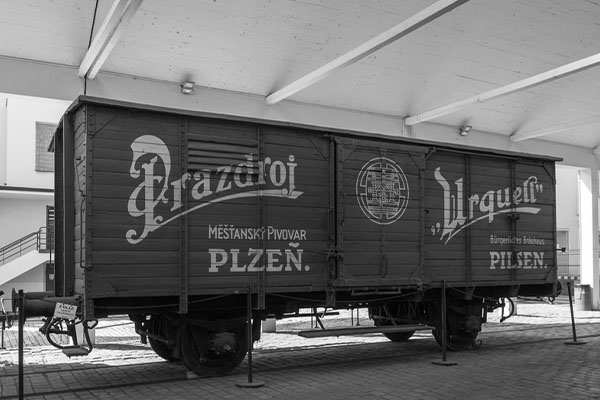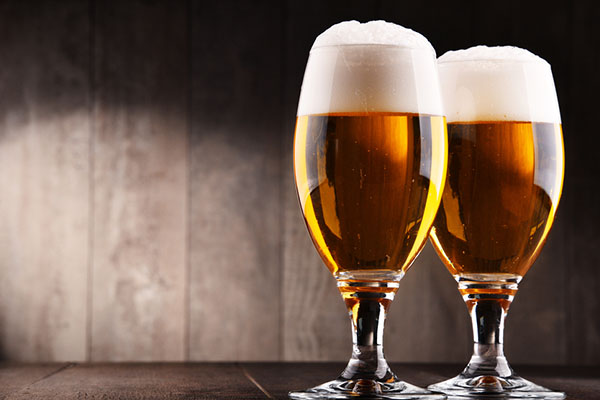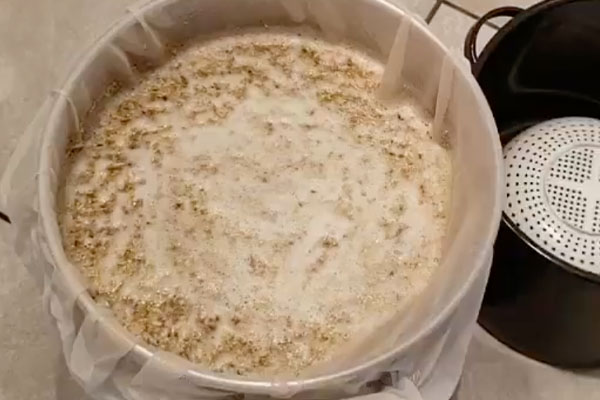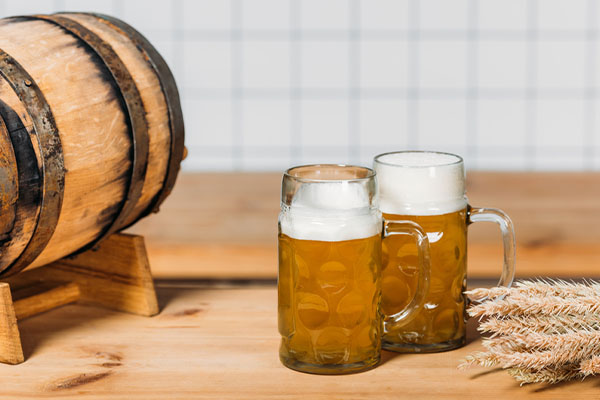Introduction
Pilsner beer, also commonly called “Pils,” is an extremely popular beer style that falls under the category of lager beer type. It’s a bottom-fermented beer that is well-known for its pale golden color as well as for its simple, clean, and crisp taste.
Because of the popularity of the Pilsner beer, it has spawned several versions of Pilsners all over the world: the European Pilsner, the German Pilsner or German Pils, and the American Pilsner.
But today, we’re going to talk about the original style, the Bohemian Pilsner, also known as the Czech Pilsner, and how to produce it in the comfort of your home. Don’t worry; we’ve made this guide as simple as possible so that even beginners to brewing can follow.
But first, let’s learn a little about the Pilsner beer.
Here’s a brief history behind the famous beer.
History of the Pilsner Beer

The Czech Republic has long been known for having the best beer in the world, so it’s not surprising that it has produced one of the most beloved beer styles in the world.
It was in the region of Bohemia, modern-day Czech Republic, that the Pilsner beer was born.
Although Bohemians have been brewing beer as early as the 1300s, it wasn’t until 1842 that the beer that we have come to know as Pilsner beer was created in the town Plzeň, or Pilsen.
After the Thirty Years War in the 1600s, the quality of beer declined until, in 1838, Bohemian brewers dumped a total of 36 barrels of beer down the drains in front of the City Hall in dissatisfaction.
That’s when they decided that enough is enough.
The disgruntled brewers then established a brewery that they called Bürger Brauerei, or Citizens’ Brewery (later Pilsner Urquell Brewery). This happened during the Industrial Revolution, resulting in innovative, ahead-of-its-time brewing technologies that they applied in their brewing method.
To further improve the quality of their beer, the brewery recruited Josef Groll, a 29-year-old brewer from Bavaria, as the head brewer of the brewery. In 1842, Groll created the Pilsner style with a mixture of the soft water of Plzeň, Saaz noble hops, light-colored malt, and Bavarian lager yeast. He then used the Bavarian lagering method, and the result was a fresh, clear, and smooth beer that had a remarkably pale straw-like color.
The beer became known as Pilsner Urquell, which translates to “original spring of Plzen,” and was an instant sensation all over Europe. Until that time, Europeans have been used to darker and heavier beers, and welcomed the new variety as a breath of fresh air.
The other factors that contributed to Bohemian Pilsner’s quickly growing popularity were the growth of railroad network in Europe, the invention of refrigeration system, and the high increase of glass usage for drinking, which helped to exquisitely display the beauty of the beer’s clarity. The beer soon became widely imitated, until different versions from different countries emerged.
The beer style is more popularly known as Bohemian Pilsner or Czech Pilsner in the present. To date, it’s still one of the most popular and well-loved styles of beer.
Pilsner Beer Characteristics
Vital statistics
- Color range: 3.5-6 SRM:
- Original gravity: 1.044-1.056
- Final gravity: 1.013-1.017
- IBU range: 35-45
- ABV range: 4.2–5.4 %
Appearance
Pilsner beer has a color that ranges from extremely light gold to a deep, burnished gold color. On top of it is a dense and creamy white head with good longevity. Another notable aspect of its appearance is the high clarity that gives it an aesthetically pleasing look.
Aroma
The aroma of the Pilsner beer is incredibly rich with complex maltiness. Spicy and floral notes are added by the Saaz hops. And while drinkers can detect slight diacetyl tones, there shouldn’t be any fruity esters at all.
Flavor
The sweetly complex, toasty, and biscuity malt flavor of the Pilsner beer is complemented nicely and balanced by the spicy hop flavor and bitterness from Saaz hops that is rounded and not sharp or harsh.
Now that we’ve got that out of the way, let’s get to the part you’ve been waiting for the most.
How To Brew Pilsner

To start, here are the equipment and ingredients that you have to prepare.
Special equipment
- Brewing kettle (at least 7.5 gallons)
- Long stirrer
- Mesh grain bag (extra-large)
- Immersion wort chiller
- Fermentation bucket
- Temperature-controlled refrigerator
- Auto-siphon racking cane
- Airlock and stopper
- Hydrometer
- Carboy
- Homebrewing sanitizer
- Bottles
Ingredients
- 7 lbs of crushed pilsner malt
- 8 gal. water (a mix of 4 gal. tap water and 4 gal. distilled water)
- 1.5 lbs of extra light dry malt extract
- 1.5 oz. of Saaz hops at 90 minutes
- 1 oz. of Saaz hops at 20 minutes
- 1.5 oz. of Saaz hops at 5 minutes
- 1 oz. of Saaz hops at flame-out
- 11.5 g dry lager yeast (2 packs of Saflager S-23)
Directions

- Before everything else, make sure to sanitize all the equipment you’re going to use first to avoid any health hazard.
- Take your brewing kettle, and line the inside with the mesh grain bag. After that, fill it up with 2.5 gallons of tap water and raise temperature up to about 157 degrees Fahrenheit, then take the kettle out from the heat.
- Start mashing by adding 7 lbs of the pilsner malt to the heated water and inside the mesh bag as well; do it slowly. To avoid any clumps, stir well for about a couple of minutes until the temperature equalizes to about 148 degrees Fahrenheit.
- Next, cover the mash you’ve created and only take off the cover to stir the mixture every 20 minutes or so. While waiting, heat up 3 gallons of water to 190 degrees Fahrenheit.
- After an hour has passed, you can now pour the water you’ve heated up carefully into the mash. Stir until the temperature equalizes to 170 degrees Fahrenheit.
- Now allow the wort to drain from the mesh grain bag as you slowly lift it out of the liquid. As the wort drains, hold the bag above the kettle for about 5-10 minutes. Top the wort off with up to 6.5 gallons of water, then add 1.5 lbs extra-light dry malt extract. Bring it to a vigorous boil.
- Add 1.5 oz. of Saaz hops in a mesh bag once the wort begins boiling. Add another ounce of Saaz hops after a 70-minute boil. Boil it for another 85 minutes, then add 1.5 oz. of Saaz hops.
- Once you’ve completed a 90-minute boil, you can then remove it from the heat, then add a hop addition of 1 oz. of Saaz hops.
Just a little warning before you proceed: At this point, everything that comes into contact with wort after it has cooled down below 180 degrees Fahrenheit should be sanitary. You should also minimize the wort’s air exposure as much as possible.
- Now it’s time to cool the wort. You can do this by using an immersion wort chiller or by placing the pot in an ice bath. Wait until it gets to a lower temperature of below 70 degrees Fahrenheit, then transfer it to a fermentation bucket (a carboy would do) and put it inside a temperature-controlled refrigerator that’s been set to 48 degrees Fahrenheit. Make sure the fermentation bucket is sanitized!
- Using an auto-siphon racking cane, take enough amount of wort then get your hydrometer to take a gravity reading. Take note of the reading, as you will need it later to be able to calculate the alcohol content of the wort after the fermentation process (it should be around 1.054).
- Take your airlock with a stopper and cover the fermentation bucket with it. Wait until the wort cooled to 50 degrees Fahrenheit, then vigorously stir for a minimum of 5 minutes. Afterward, add in the 2 packs of dry lager yeast.
- The next step is to ferment the wort for at least 3 weeks at a temperature of 48 degrees Fahrenheit. Once the fermentation process is completed, transfer it to a carboy and let it cool to room temperature for a diacetyl rest of 12 hours.
- For lagering, place the carboy inside a temperature-controlled refrigerator and set the temperature to 35 degrees Fahrenheit. Store it there for 4-6 weeks.
- After the lagering is finished, it’s time to add some carbonation to your freshly brewed beer. Put the finished product in a bottle with just the right amount of priming sugar to achieve the level of carbonation that you prefer.
- And finally… chill and enjoy your flavorful beer!
Food Pairings
To better enjoy your beer, here are some ideas for foods that will pair great with your Pilsner beer:
- Roasted chicken
- Fried chicken
- Salads
- Light seafood such as tuna, salmon, and trout
- Various types of cheeses like American cheese, Havarti, Monterey Jack, and Muenster
- Asparagus
- Mexican and Asian dishes
Conclusion

Who knew that the dissatisfaction and frustration of some brewers years ago would result in a game-changing new variety of beer?
The Pilsner beer sure has a history as rich as its flavor and aroma. No wonder that it’s still one of the most famous beer styles in the world until now.
It sure is a classic and something that homebrewers should learn to make.
We hope that we’ve helped you through this easy-to-follow guide.
Cheers and happy brewing!




